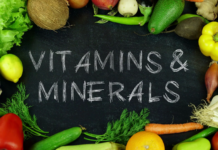Niacin, also known as Vitamin B3, works closely with vitamin B1, B2, B6, pantothenic acid, and biotin to break the carbohydrates, fats, and proteins in food down into energy.
Without Vitamin B3 , the body would not be able to convert the food we eat into energy. Niacin also helps enzymes function in the body.
Enzymes are used by the body in many reactions. Vitamin B3 helps keep the skin, digestive tract, and nerves healthy.
In the early 1900’s, a disease called pellagra was common in the southern United States. At this time, corn was a staple of the diet.
This diet provided neither niacin-rich foods like meats and certain vegetables, nor protein-rich foods containing tryptophan.
Pellagra was caused by this lack of Vitamin B3 intake. Pellagra is uncommon today, due to widespread niacin enrichment of most cereals, flours, pastas, and corn meals.
For people who eat enough protein, Vitamin B3 deficiency is not common. Niacin deficiency symptoms include:
- weakness
- loss of appetite
- digestive upsets
- insomniaheadaches
- irritability
- Frequently, a sore, swollen, purple-red tongue.
More drastic niacin shortfall leads to pellagra, which can result in symptoms such as:
- skin and gastrointestinal lesions
- swollen mucous membranes
- diarrhea
- dementia
- death, in extreme cases
But, as mentioned above, pellagra is all but a thing of the past in the United States. In recent years, niacin has been used with some success to treat people with high cholesterol levels.
The high dose required to bring about any change in cholesterol, up to 3,000 mg per day, can bring on side effects.
Side Effects
Common side effects include flushing of the skin and itching. High doses of Vitamin B3 may also cause liver damage or stomach ulcers. Because of these potentially dangerous side effects, niacin should only be used to control cholesterol when prescribed by a doctor.

THE RECOMMENDED DIETARY ALLOWANCE, (RDA), FOR NIACIN IS:
- Males Adult, Age 19 to 50, : 19 milligrams (mg)
- Females Adult, age 19 to 50: 15 mg
- Males Adult, Age 50 and older : 15 mg
- Females Adult, age 50 and older: 13 mg
- Pregnant women: 17 mg
- Lactating or breastfeeding women: 20 mg
© Copyright – Hector Sectzer

















